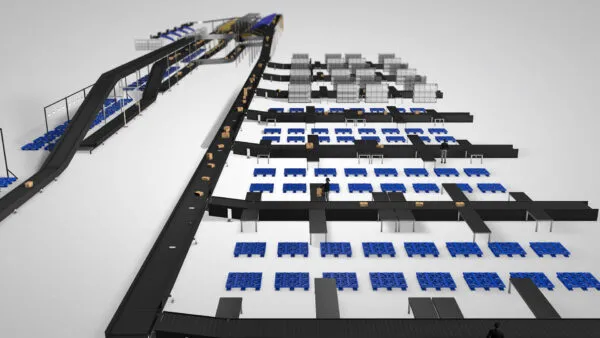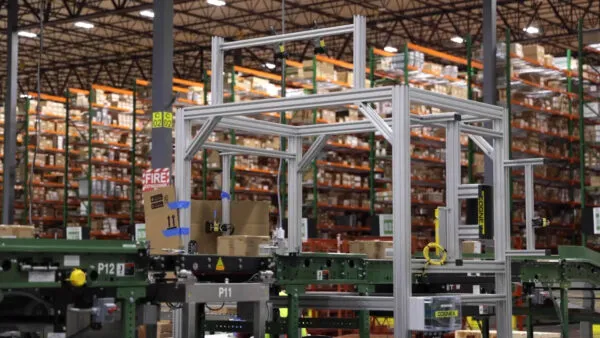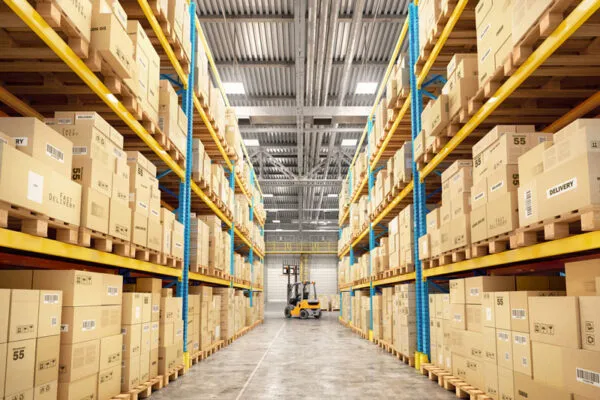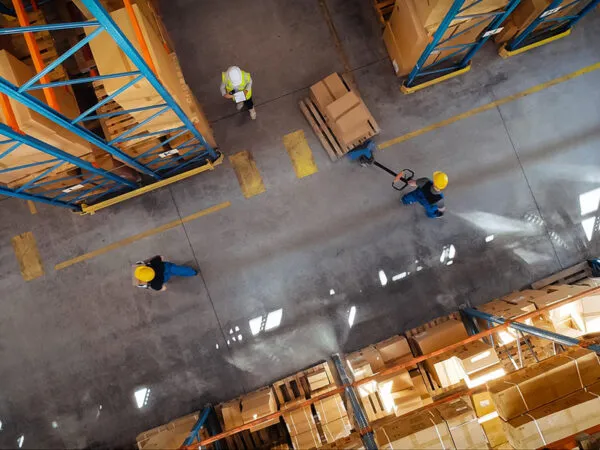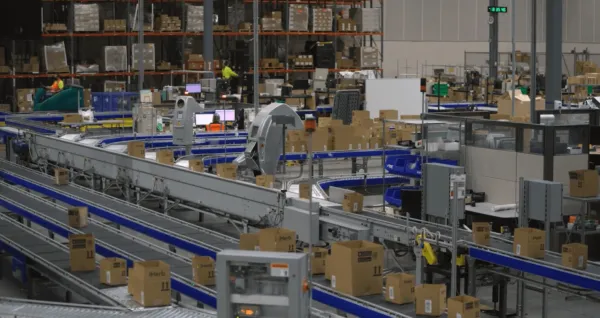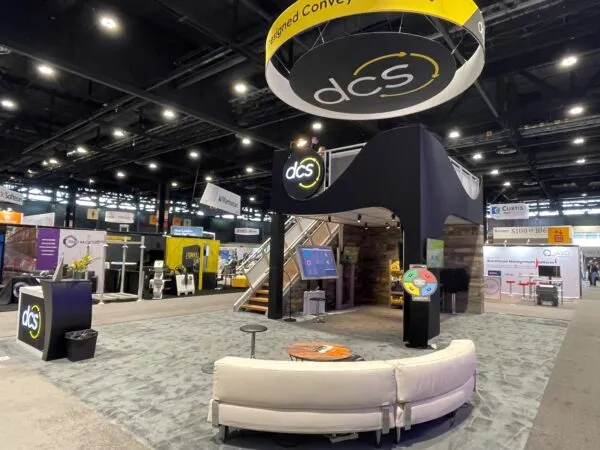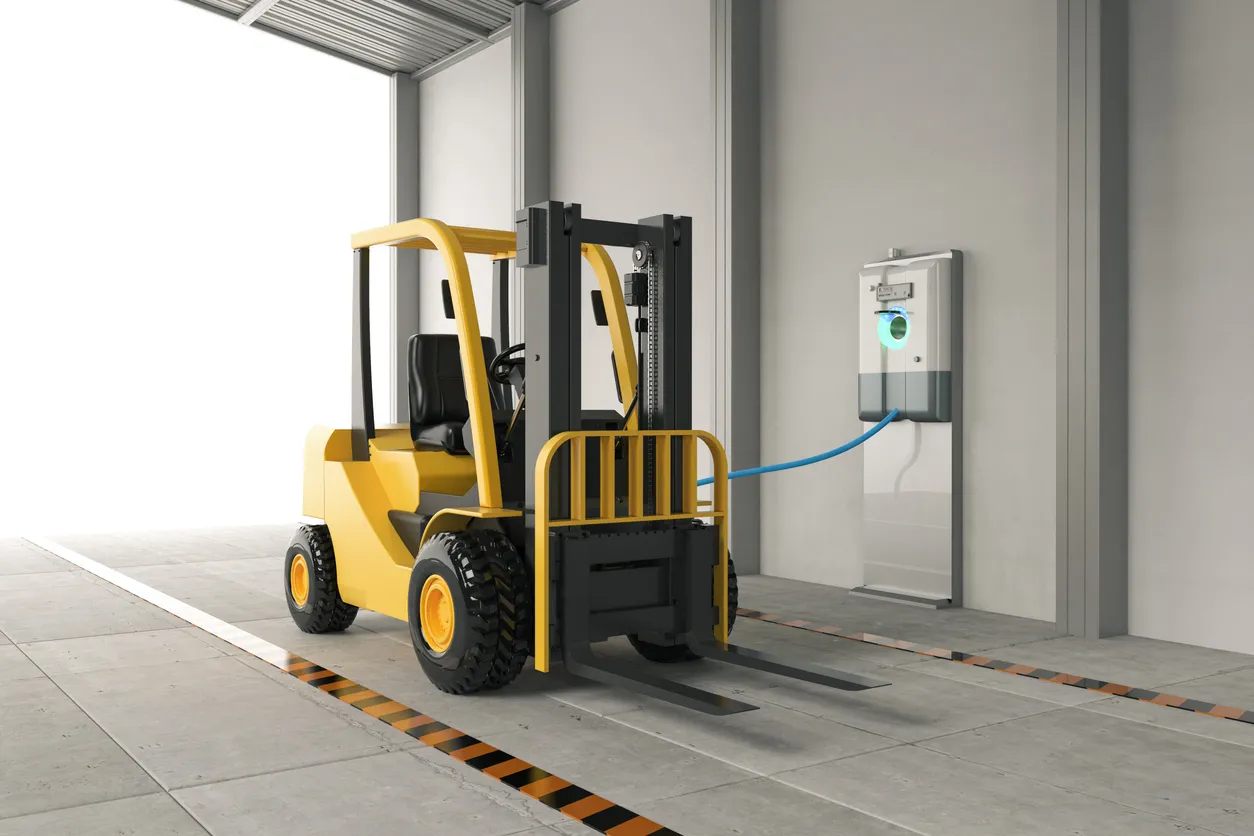Each square foot of ambient warehouses, parcel handling operations, and distribution centers (DCs) uses 6.1 kilowatt hours (kWh) of electricity and 13,400 Btu of natural gas annually. More than three quarters of that energy powers lighting and heating, ventilation, and air conditioning (HVAC) systems. Further, energy costs represent as much as 15% of a non-refrigerated warehousing facility’s operating budget.
That makes improving energy utilization an ideal area of focus for operations wishing to be more environmentally friendly. To that end, here are a few ways to improve your operation’s sustainability with automation and process changes that boost energy efficiency.
Switch to LED lighting. Industrial Maintenance & Plant Operations (IMPO) magazine notes that industrial LED offers 90% greater energy efficiency compared to high-pressure sodium (HPS) and other high-intensity discharge (HID) lighting. It also estimates that 92% of industrial facilities still haven’t switched, despite HPS and HID lighting using three times the amount of energy as LED systems. Changing the light bulbs—and implementing automated, sensor-based controls that turn them on when they detect personnel in the area—is a bright way to reduce energy usage and meet an operation’s sustainability goals.
Upgrade HVAC systems. Just like material handling systems, heating and cooling equipment continues to improve its energy efficiency and operational performance as new technology develops. According to the U.S. Department of Energy (DOE), the typical commercial building wastes 30% of the energy and costs associated with powering its HVAC. Further, at least 25% of all roof-top HVAC units are oversized, which also wastes energy. Chances are, your facility’s HVAC is outdated, inefficient, or oversized. Likewise, the latest programmable thermostats and HVAC control systems utilize sensors and automation to monitor and adjust temperatures. Upgrading both will likely reduce both energy usage and expenses.
Utilize your facility’s vertical space. Many a warehouse manager laments the lack of adequate space to store and organize all the inventory and processes that need to fit into an existing facility. Yet adding more square footage by expanding the current building footprint is costly—even before factoring in the need to illuminate, heat, and cool the additional space. One alternative is to add an elevated work platform or mezzanine within the facility’s current envelope. These structures expand available usable space vertically without breaking new ground, yet add minimal additional energy demands to the facility.
Automate inventory storage. For even greater cubic density, install an automated storage and retrieval systems (ASRS) to increase the amount of inventory held in the same amount of square footage. Limited only by the ceiling height of the facility, engineering an ASRS to fully utilize empty overhead space maximizes storage density without adding on to the building. Many ASRS incorporate energy-efficient motors and drives, some of which even return power back to the overall system through regenerative braking. They also present items for picking directly to an associate, cutting energy expended through travel time via motorized vehicle or conveyor. Additionally, these sophisticated systems continuously reslot and optimize items’ storage positions items to reduce travel distance from storage position to picker. The shorter path reduces the energy draw required to retrieve and present inventory.
Deploy battery-powered automation. Often hailed for their navigational and operational flexibility as they support a variety of order fulfillment tasks, autonomous mobile robots (AMRs) are also increasingly more energy efficient. Designed to run on rechargeable batteries that plug into standard 120-volt power systems, to take advantage of opportunity charging, and to switch automatically into power saving mode when idle, AMRs require a much smaller, simpler energy infrastructure than traditional automation. Fixed transport equipment, such as sorters and conveyors, for example, require large control panels 480-volt power supplies. Sorters and conveyors certainly have their place and many of the newest models feature energy-saving advances of their own. But in areas of an operation where fixed transport systems do not fit, AMRs offer an energy-efficient solution.
Swap fuel-powered forklifts with electric. Diesel or propane powered forklifts produce both noise and emission pollution. Switching to electric, battery-powered fork trucks eliminates both. Further, advances in forklift battery technology—from the original lead-acid to newer lithium-ion models—are also contributing to better sustainability. Either battery type is a much more environmentally friendly choice over fossil fuel powered forklifts. Lithium-ion forklift batteries have the greener edge, however, providing consistent power and voltage throughout a full charge that lasts up to 24 hours. They also accept opportunity charging without degradation of the unit, and don’t require designated areas to store additional batteries for changing between shifts like lead-acid batteries.
Make right-sized packaging. With the uptick in e-commerce shopping, American households are drowning in a sea of cardboard. So are retail DCs, which must stock multiple different carton dimensions to accommodate a variety of outbound shipment sizes. As an alternative, several companies manufacture equipment that automatically produces custom-sized corrugated boxes. Measured, cut, and constructed to precisely fit a shipment on demand, these right-size packaging solutions eliminate excess wasted cardboard, as well as the storage space required to stock multiple cartons. Likewise, the cartons themselves no longer need void fill to secure the item in an oversized box. Plus, more compact packaging creates greater density in shipping trailers, lowering fuel usage and transportation costs.
Protect your thermal envelope. Avoid opening dock doors unnecessarily. In winter, don’t open a dock door until the trailer rests firmly against the dock seal to prevent heated air from escaping, for example. Likewise, it may be tempting to leave dock doors open during hot summer days. That can introduce dirt and dust into the facility, however, which can congest HVAC air filters and degrade the efficiency of the ventilation system’s operation. Dust can also contaminate mechanical components, causing them to run less efficiently and requiring more energy draw to maintain performance.
Reuse containers when possible. An investment in reusable plastic totes, containers, or pallets used in a closed-loop system to transport items between facilities or stores can cut packaging waste and costs while improving sustainability. So can simply re-using cardboard cartons for internal movement and storage until they’re no longer viable, then recycling them. Either approach is a greener contribution to your operation’s environmental stewardship goals.
Looking for more automation and process improvement ideas to enhance your operation’s sustainability efforts? Connect with us.
AUTHOR: Mike Prince, Project Director, mike@designedconveyor.com
